Abstract
Rats in a laboratory foraging simulation searched for sequential opportunities to feed in two patches that differed in the rate at which food pellets were delivered (controlled by fixed-interval schedules) and in the size of the pellets. The profitability of feeding in each patch was calculated in terms of time (grams per minute) and in terms of effort (grams per bar press). These values were the result of the imposed fixed interval, the size of the pellets, and the rate at which the rats pressed the bar in each condition. The rats ate more food and larger meals, but not more frequent meals, at the patch offering the higher rate of food consumption, calculated as grams per minute. The relative intake at any patch was a function of the relative rate of intake during meals at that patch compared to the other patch. Rats respond to explicit manipulations of feeding time in the same manner as they respond to manipulations of feeding effort.
Full text
PDF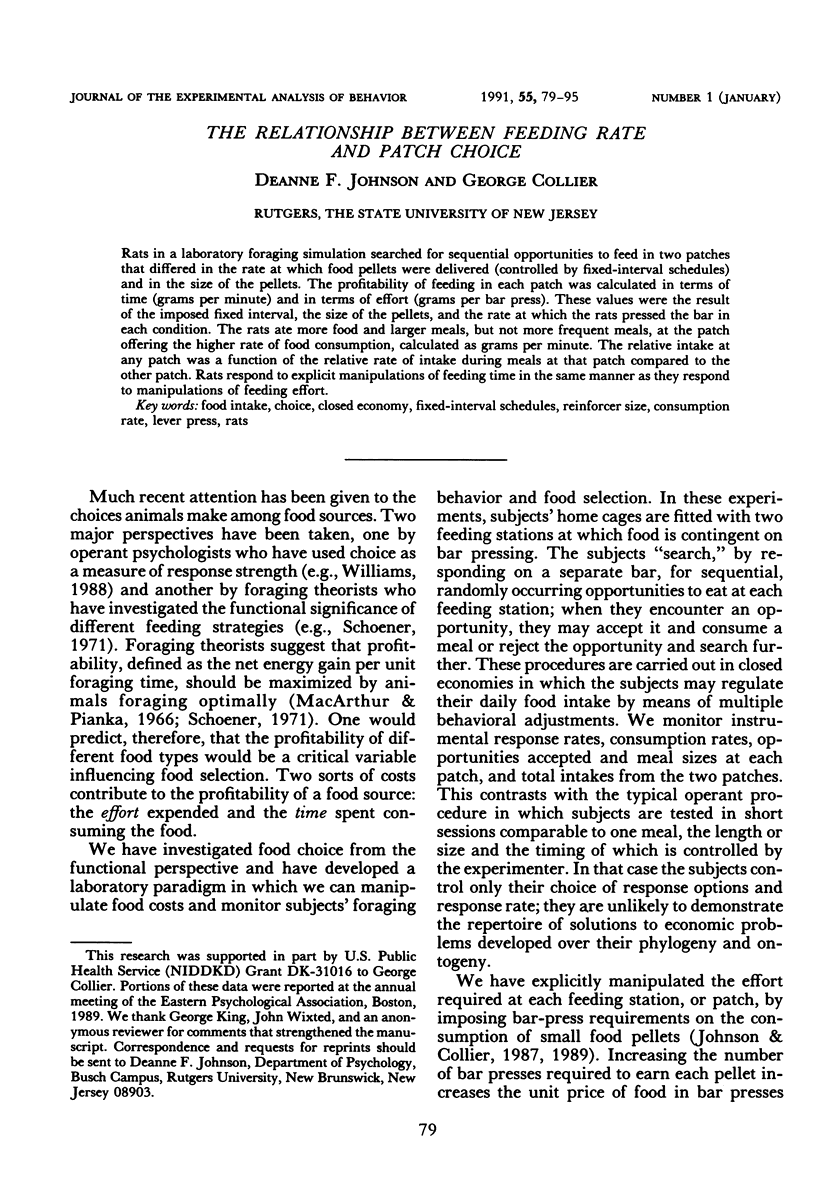
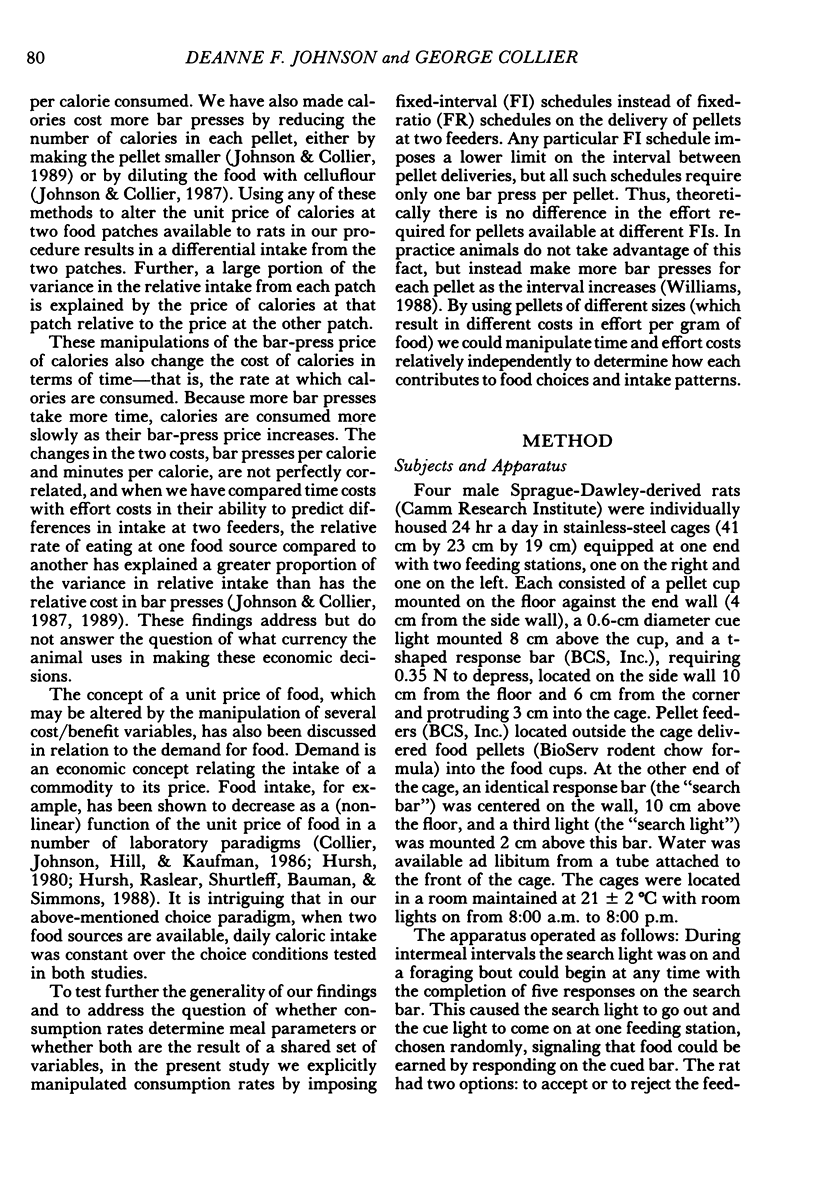

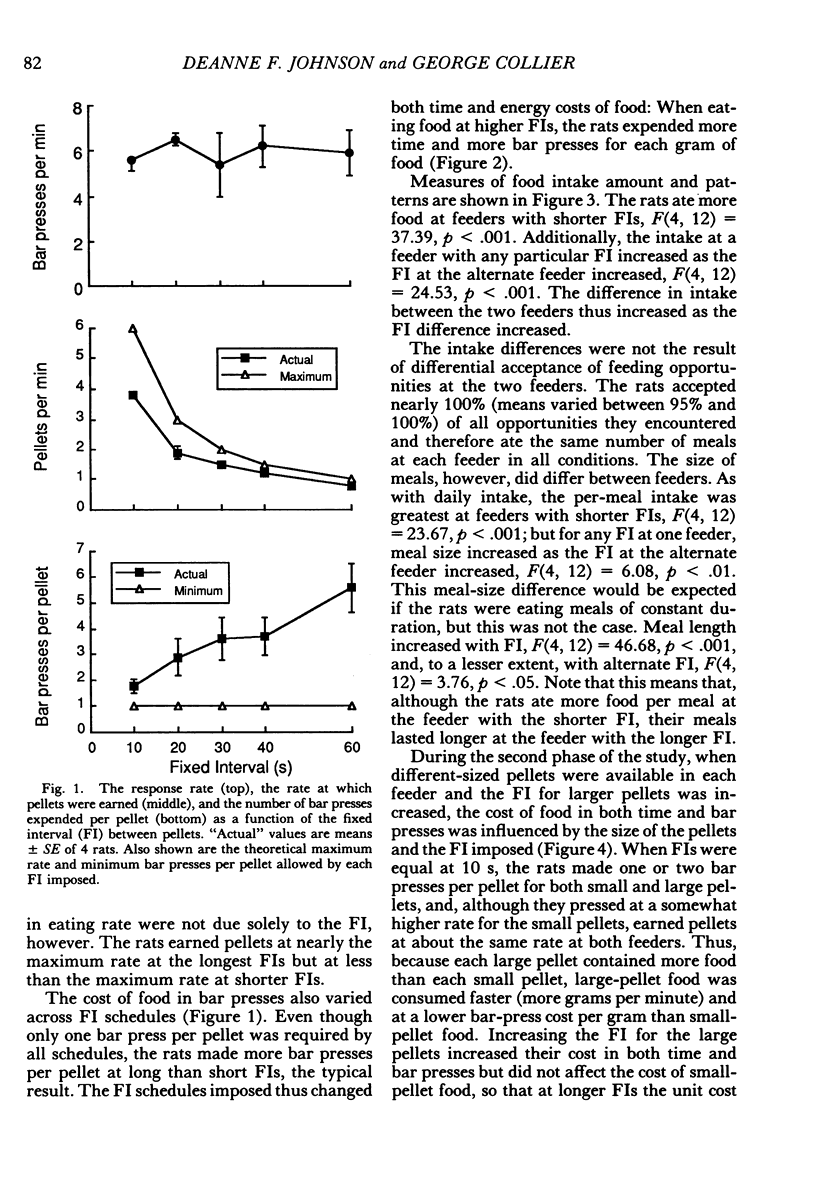
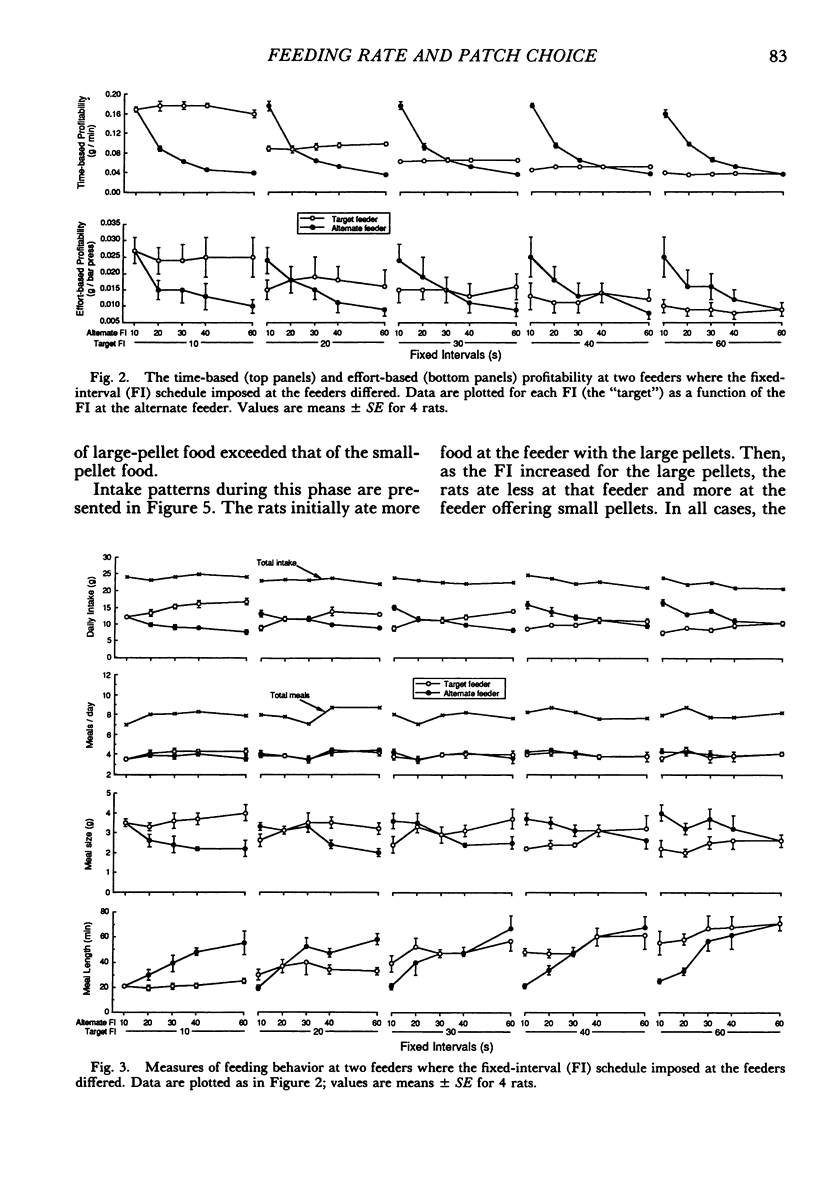
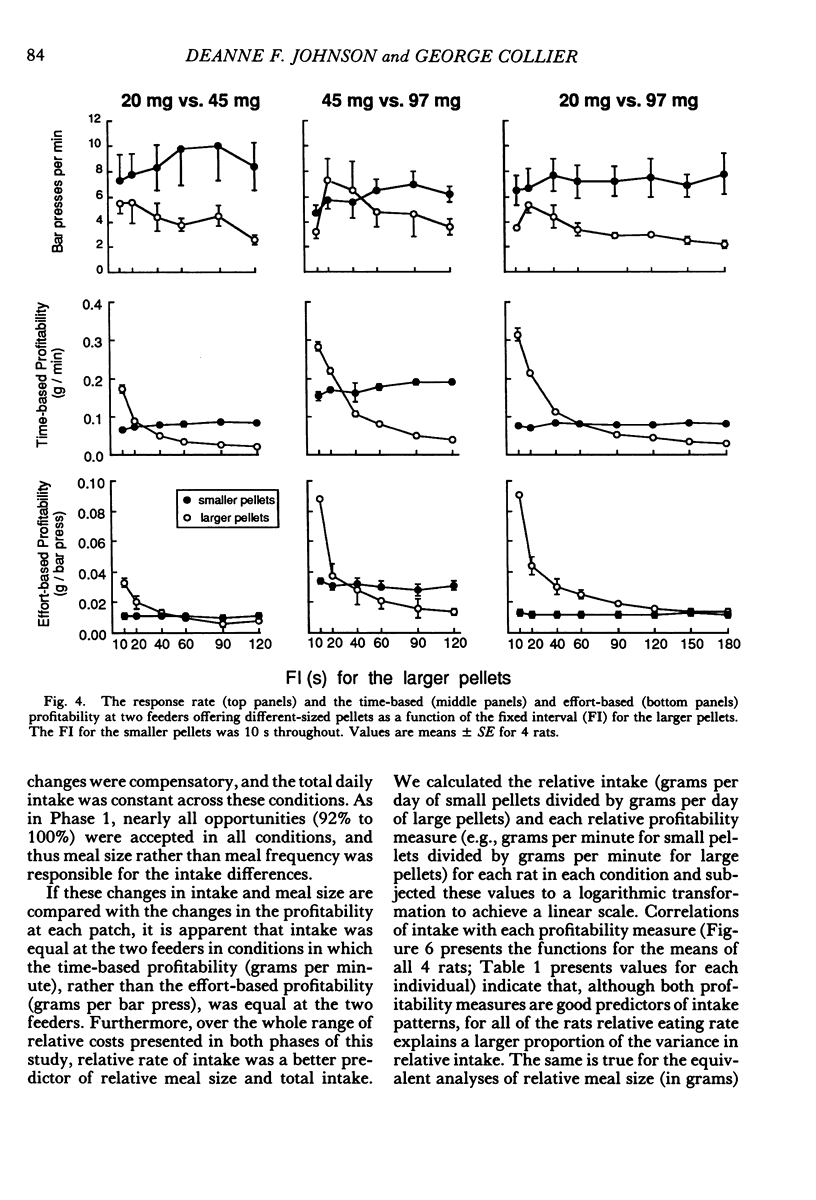
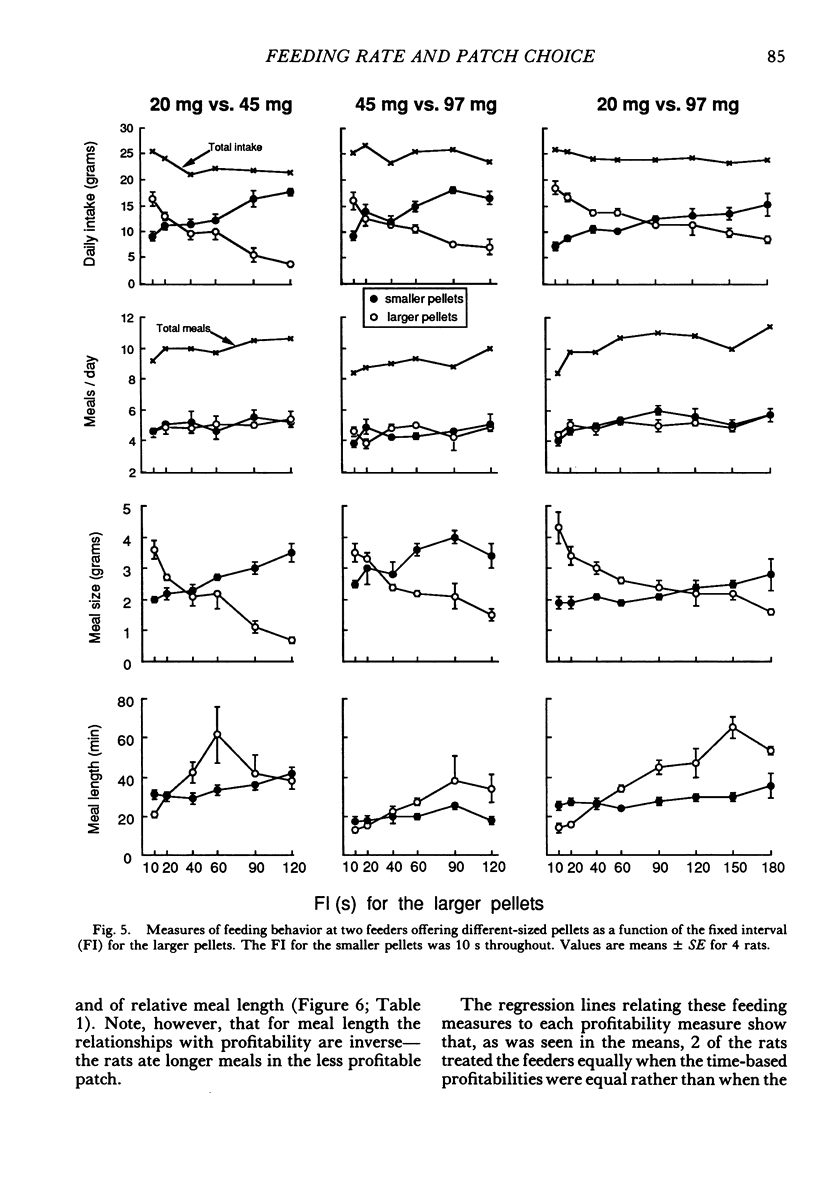
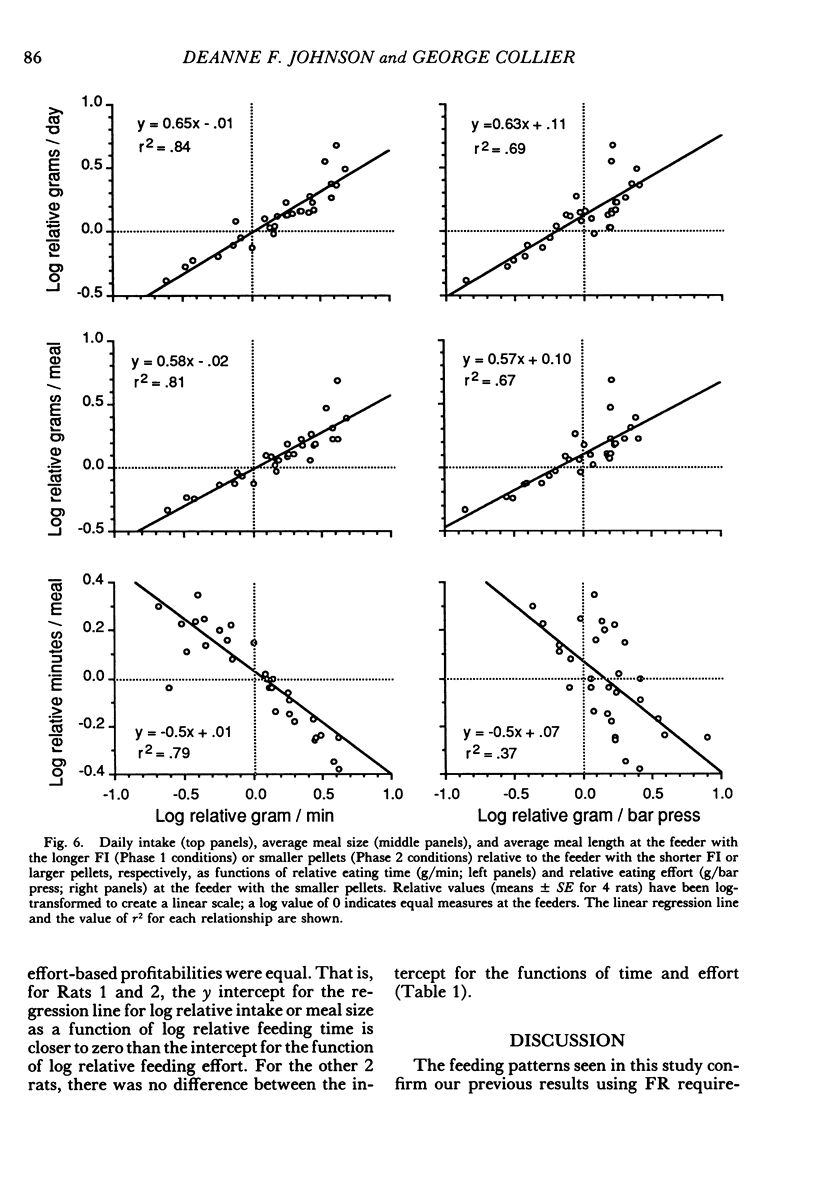
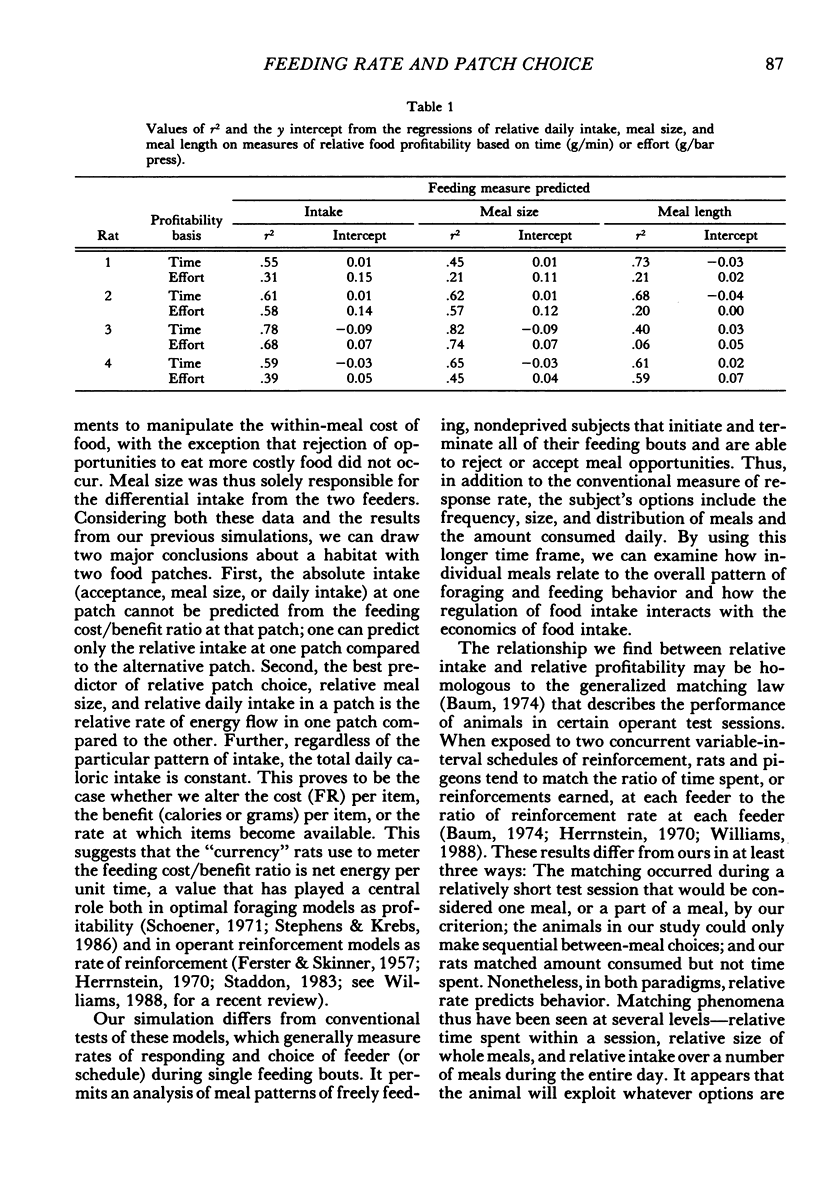
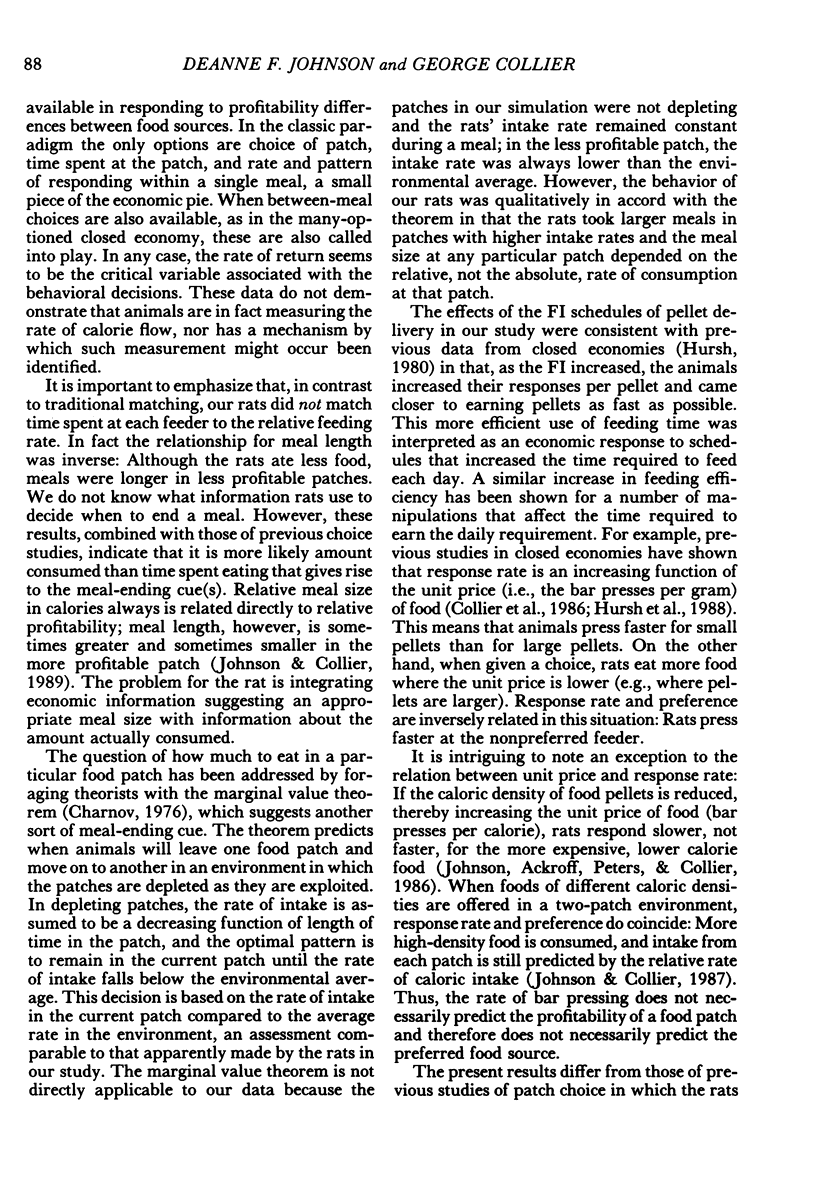
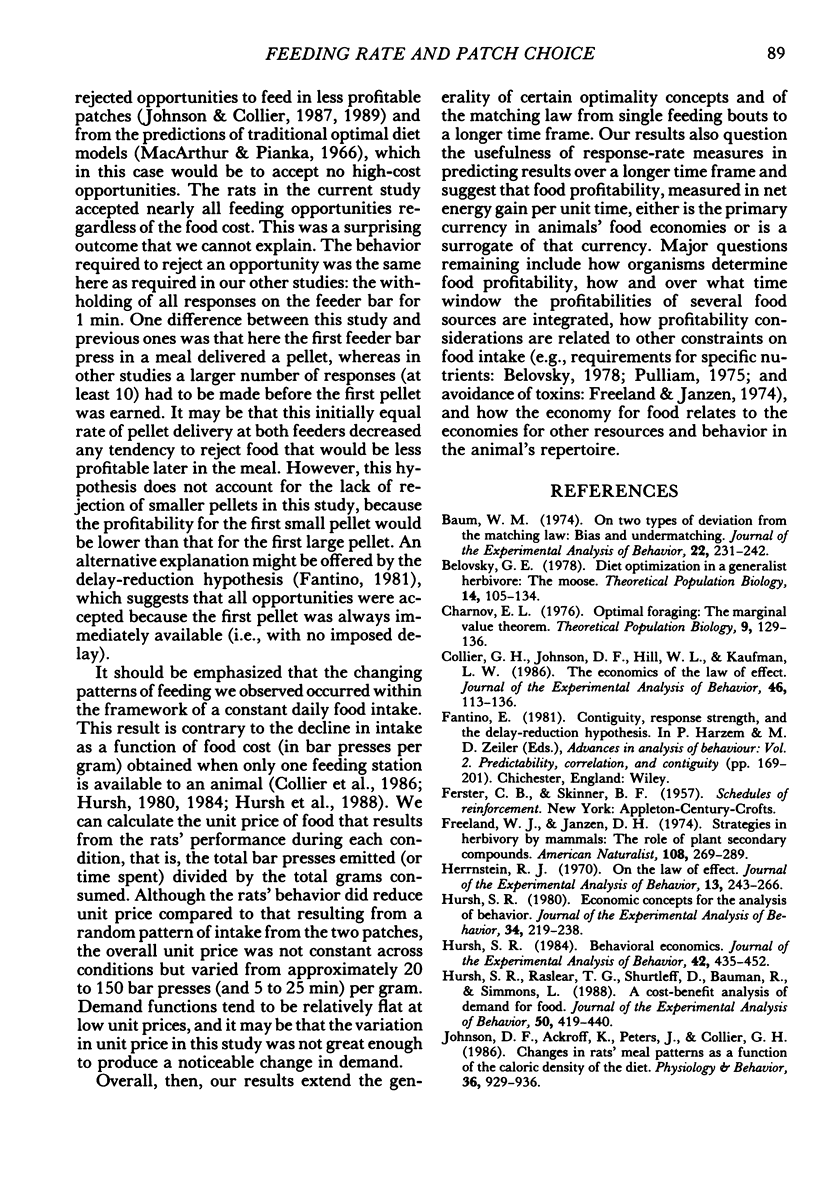
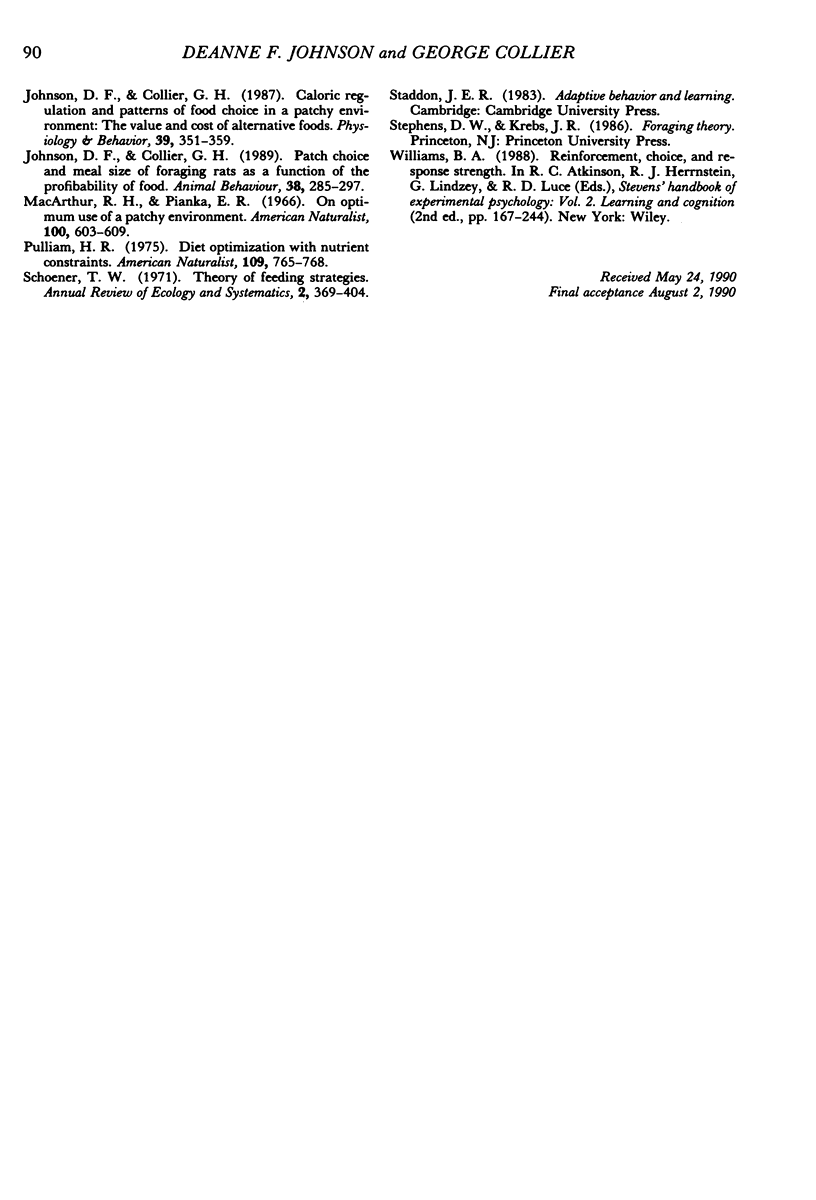
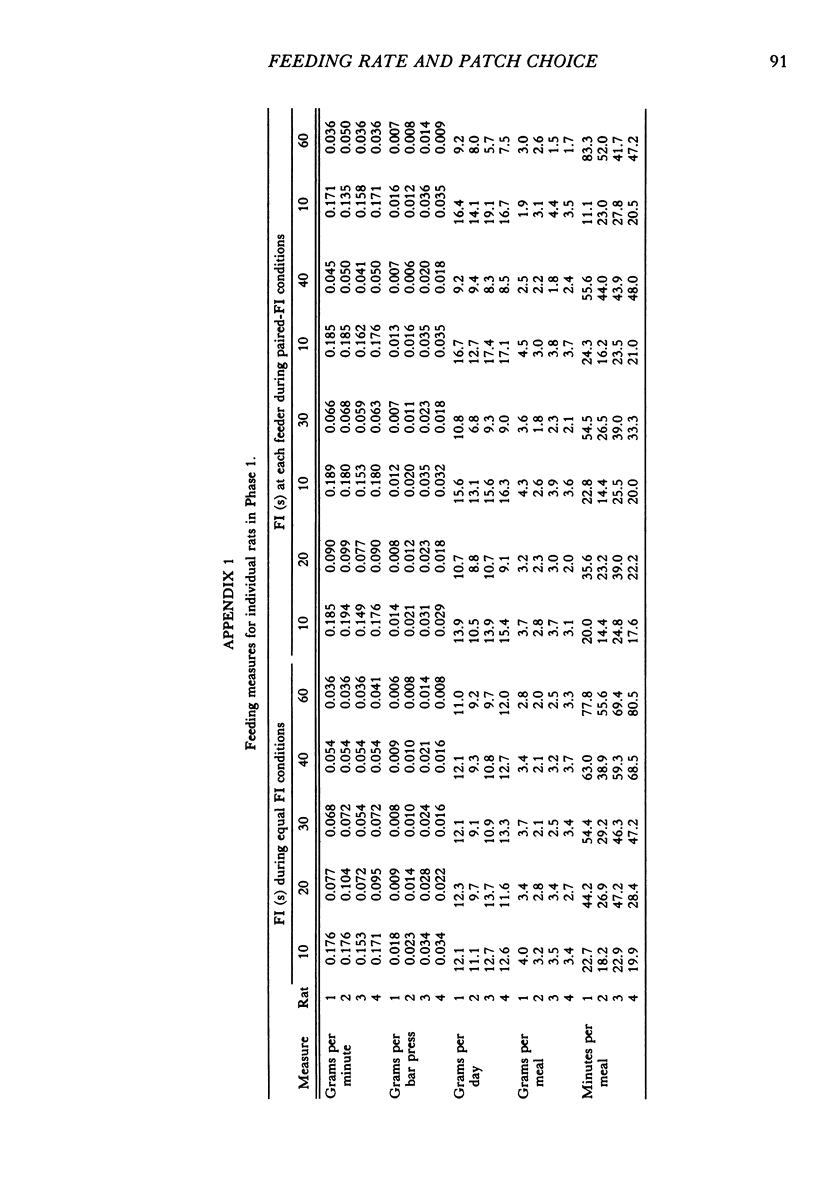
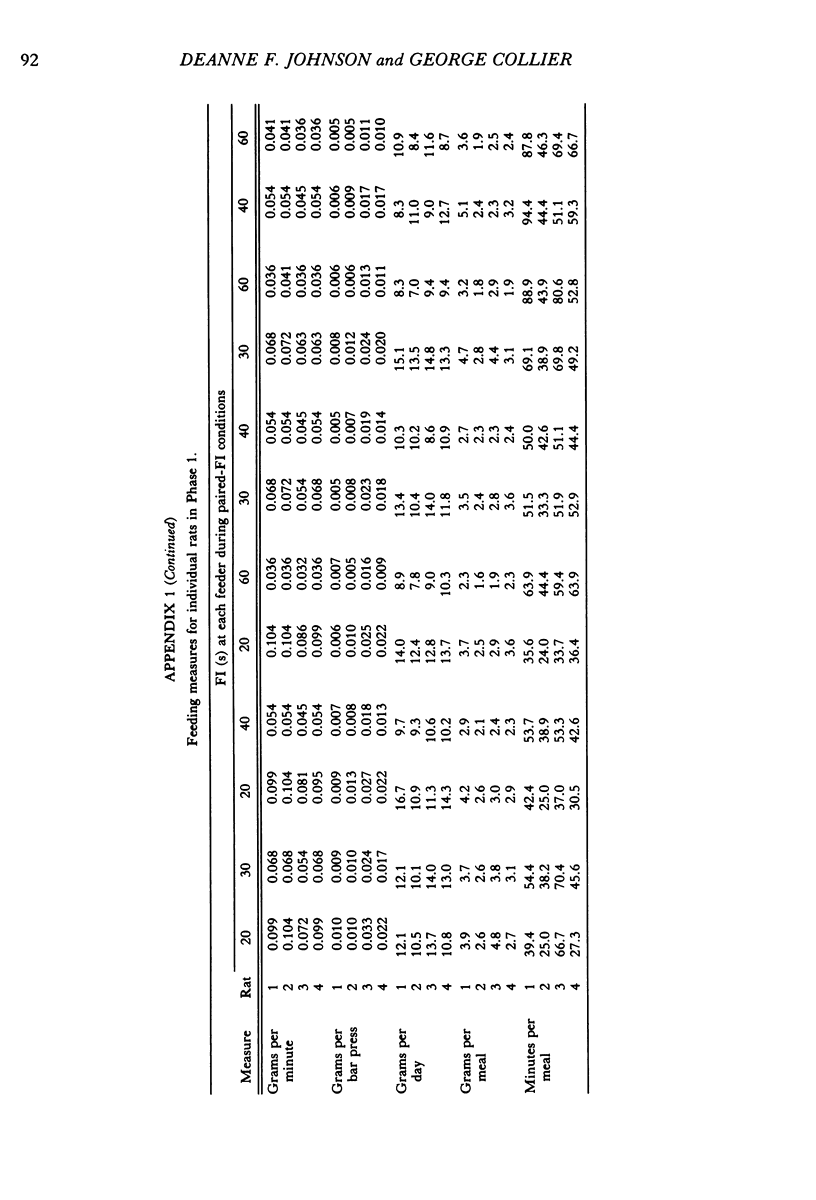
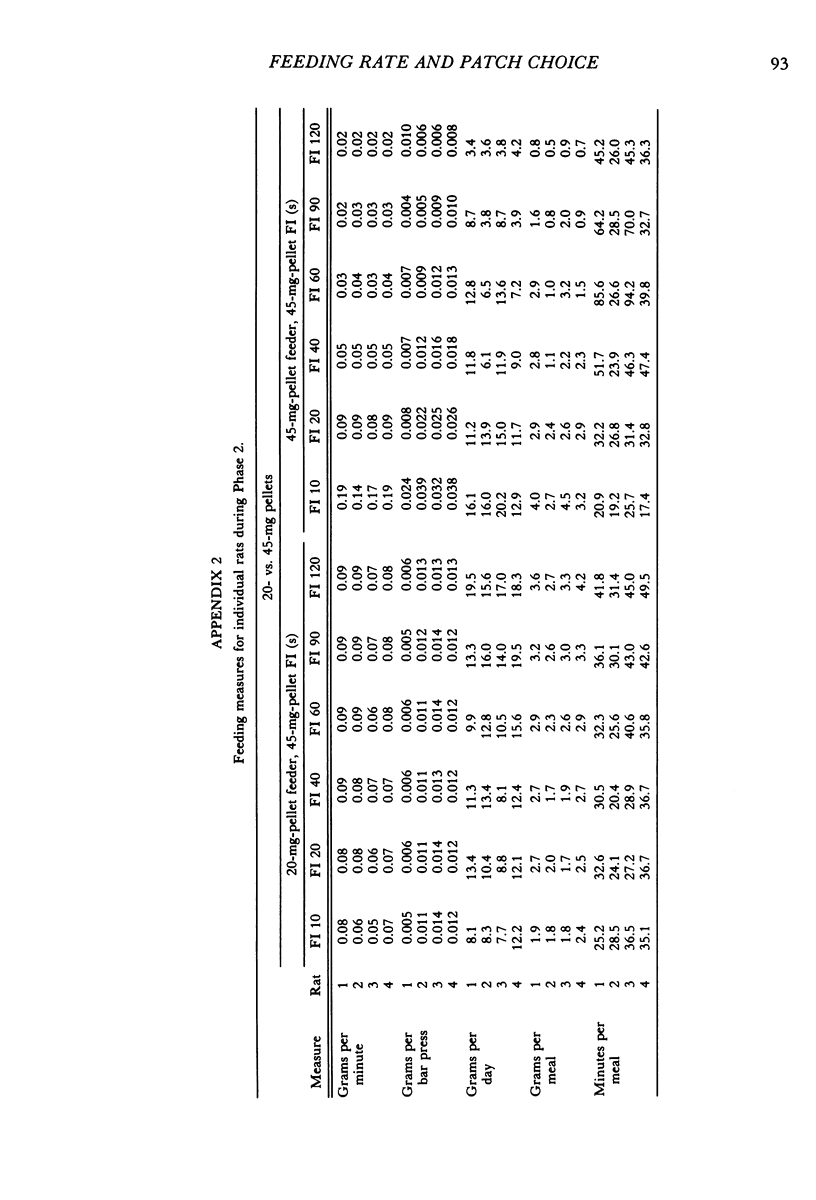
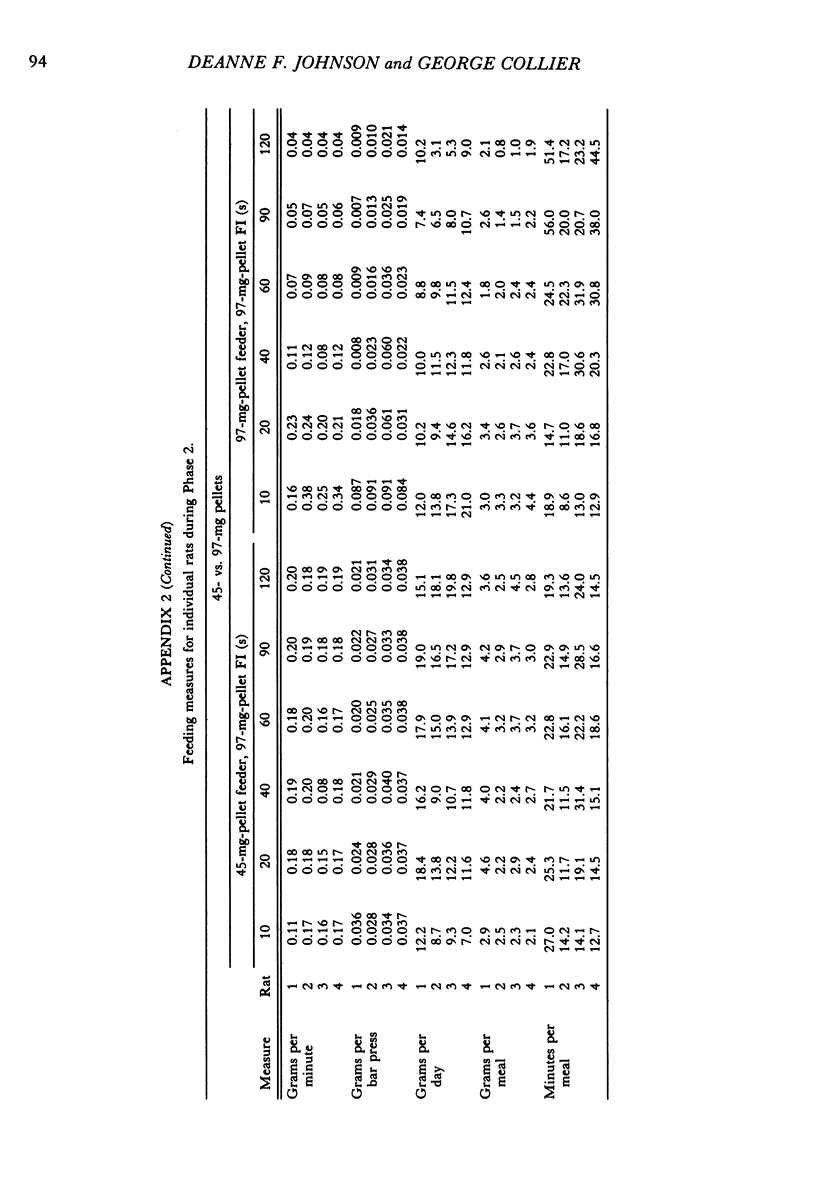
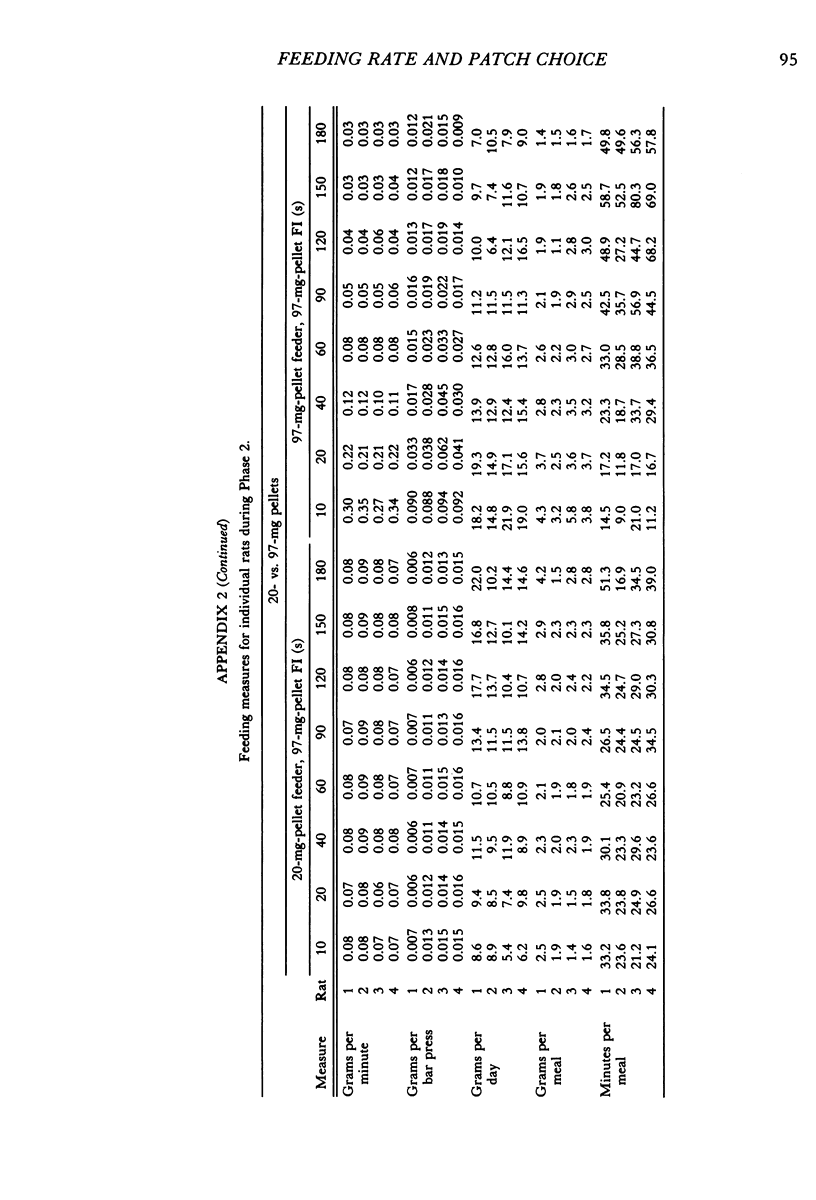
Selected References
These references are in PubMed. This may not be the complete list of references from this article.
- Baum W. M. On two types of deviation from the matching law: bias and undermatching. J Exp Anal Behav. 1974 Jul;22(1):231–242. doi: 10.1901/jeab.1974.22-231. [DOI] [PMC free article] [PubMed] [Google Scholar]
- Belovsky G. E. Diet optimization in a generalist herbivore: the moose. Theor Popul Biol. 1978 Aug;14(1):105–134. doi: 10.1016/0040-5809(78)90007-2. [DOI] [PubMed] [Google Scholar]
- Charnov E. L. Optimal foraging, the marginal value theorem. Theor Popul Biol. 1976 Apr;9(2):129–136. doi: 10.1016/0040-5809(76)90040-x. [DOI] [PubMed] [Google Scholar]
- Collier G. H., Johnson D. F., Hill W. L., Kaufman L. W. The economics of the law of effect. J Exp Anal Behav. 1986 Sep;46(2):113–136. doi: 10.1901/jeab.1986.46-113. [DOI] [PMC free article] [PubMed] [Google Scholar]
- Herrnstein R. J. On the law of effect. J Exp Anal Behav. 1970 Mar;13(2):243–266. doi: 10.1901/jeab.1970.13-243. [DOI] [PMC free article] [PubMed] [Google Scholar]
- Hursh S. R. Behavioral economics. J Exp Anal Behav. 1984 Nov;42(3):435–452. doi: 10.1901/jeab.1984.42-435. [DOI] [PMC free article] [PubMed] [Google Scholar]
- Hursh S. R. Economic concepts for the analysis of behavior. J Exp Anal Behav. 1980 Sep;34(2):219–238. doi: 10.1901/jeab.1980.34-219. [DOI] [PMC free article] [PubMed] [Google Scholar]
- Hursh S. R., Raslear T. G., Shurtleff D., Bauman R., Simmons L. A cost-benefit analysis of demand for food. J Exp Anal Behav. 1988 Nov;50(3):419–440. doi: 10.1901/jeab.1988.50-419. [DOI] [PMC free article] [PubMed] [Google Scholar]
- Johnson D. F., Ackroff K., Peters J., Collier G. H. Changes in rats' meal patterns as a function of the caloric density of the diet. Physiol Behav. 1986;36(5):929–936. doi: 10.1016/0031-9384(86)90455-5. [DOI] [PubMed] [Google Scholar]
- Johnson D. F., Collier G. H. Caloric regulation and patterns of food choice in a patchy environment: the value and cost of alternative foods. Physiol Behav. 1987;39(3):351–359. doi: 10.1016/0031-9384(87)90234-4. [DOI] [PubMed] [Google Scholar]


